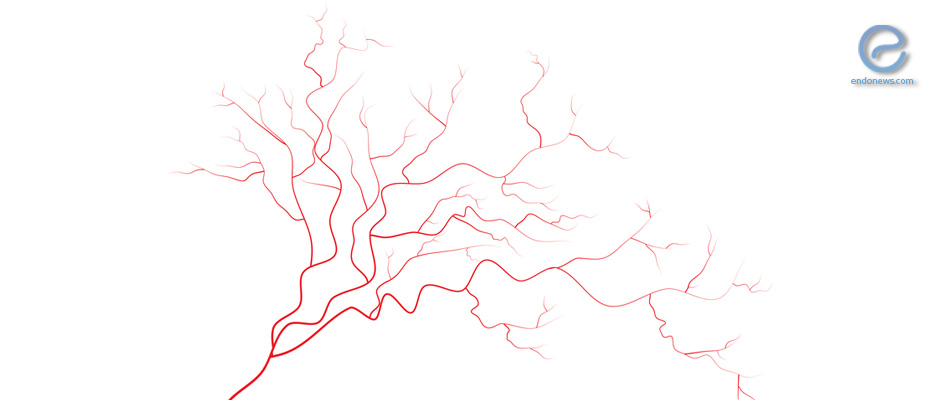Reduced vascularization in ovarian endometriomas associated with less pain
Jul 23, 2017
Three-Dimensional Power Doppler to study Ovarian Endometriomas Vascularization
Key Points
Highlight:
- Vascularization plays an important role in the pathogenesis of endometriosis, but its relation with symptoms is not clear.
- This study evaluated the correlation between pelvic pain and dysmenorrhea and vascularization of the ovarian endometrioma.
Importance:
- Vascularization of ovarian endometrioma was inversely associated with the severity of pelvic pain.
What's done here:
- Twenty-nine women with single unilateral ovarian endometriomas participated in this study. All endometriomas were examined using 3D power Doppler sonography.
- Four indices were measured: mean grayness, flow index, vascularization index, and vascularization-flow index.
- Definitions for pain include dysmenorrhea, chronic pelvic pain, and dyspareunia. The pain severity was assessed by its presence and duration.
Data:
- Using univariable association analyses, there was an inverse association between the severity of painful symptoms and endometrioma vascularization index.
-
No correlation between flow index and painful symptoms was found.
- Mean grayness was associated with the presence of pelvic pain.
Limitations:
-
Small sample size
-
The absence of other endometriosis lesions that may cause pain cannot be confirmed, as the authors did not perform the diagnostic laparoscopy.
Lay Summary
Angiogenesis, i.e., the development of new blood vessels is believed to play an important role in endometriosis pathogenesis and symptoms. Endometriosis is associated and requires neovascularization to proliferate, invade surrounding normal structure in order to establish an endometriotic lesion. Ovarian endometriomas occur when small endometrial tissue is transplanted, and grow/enlarges inside the ovaries. Its presence is often associated with pelvic pain in women.
To better understand the impact of angiogenesis in painful symptoms associated with endometriomas, Rizzello et al. evaluated the correlation between painful symptoms and the endometriomas vascularization using 3D power Doppler sonography. As published in Journal of Ultrasound in Medicine, this is a single-center prospective study from March 2012 through December 2012 with 29 women that have singular unilateral ovarian endometriomas. These women have no sonographic sign of deep endometriosis. Their endometriomas diameters ranged from 18.5 to 54.5 mm. Four indices were measured including mean grayness, flow index, vascularization index, and vascularization-flow index. Pain symptoms include dysmenorrhea, chronic pelvic pain, and dyspareunia and severity assessed by the presence of pain and duration.
From these analyses, the authors demonstrated that endometrioma vascularization as measured by the vascularization index was inversely associated with the severity of painful symptoms (dysmenorrhea, chronic pelvic pain, and dyspareunia). A lower correlation was also observed for the vascularization-flow index, although no correlation was found for flow index. The mean grayness index was the only one associated with the presence of pelvic pain. These results suggested the importance of vascularization in causing pain. Thus, in women with unilateral ovarian endometriomas, painful symptoms may be related to inflammatory cytokines, endometriosis-related adhesion formation, and neuronal irritation that were possible through neovascularization.
This study was limited by small sample size and the absence of diagnostic laparoscopy to confirm that participants did not have minimal endometriotic lesions, which may confound the painful symptoms observed. Further larger studies are required to confirm the findings. Three-dimensional sonography represents a valuable tool to explore the complexity of endometriomas.
Research Source: https://www.ncbi.nlm.nih.gov/pubmed/28556312
ovarian endometrioma dysmenorrhea chronic pelvic pain dyspareunia angiogenesis blood vessel

